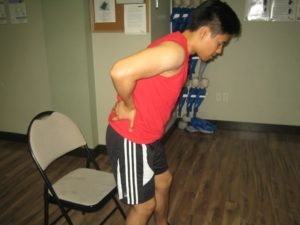Coccydynia is discomfort or pain in the coccyx or tailbone. Take note that this is the last bone at the base of the spine. An individual can strain or damage the coccyx or the adjacent ligaments and muscles.
In most instances, the pain eventually improves over a few weeks or months but it can persist longer occasionally and even severely affect the ability of the individual to perform daily activities.
What are the indications?

The main indication of coccydynia is pain and tenderness in the region right above the buttocks. The pain can be described as the following:
- Achy and dull most of the time with occasional piercing pain
- Worsen when sitting down, standing for extended periods, shifting from sitting to standing and during bowel movement
- Makes it hard to sleep and perform daily activities such as bending over
Some might experience shooting leg pain, back pain and sore hips and buttocks.
When to consult a doctor
Coccydynia often settles on its own after a few weeks and there are simple measures that can be done at home.
There are also instances in which a doctor should be consulted such as the following:
- Pain does not improve after a few weeks
- Intense pain
- There is bleeding, fever or there is pain away from the coccyx
The doctor will perform an assessment to pinpoint other serious causes for the pain such as a fracture or infection.
Possible causes of coccydynia
The usual causes of coccydynia include the following:
- Injury or accident such as a fall
- Childbirth
- Poor posture
- Repeated or extended strain on the coccyx
- Being underweight or overweight
The uncommon causes can include the development of a bony growth on the coccyx, arthritis and a coccyx that is too rigid or flexible.
Management
There are various treatment options for coccydynia. The simple measures that can be performed at home are usually recommended first and other treatments are used if these do not help.
The main treatment measures include the following:
- Avoid being seated for prolonged periods of time
- Use a specially-designed cushion for the coccyx (donut cushions)
- Application of warm or cold packs on the lower back
- Wear loose clothing
- Non-steroid anti-inflammatory drugs (NSAIDs) can be given for pain relief
If the symptoms are persistent, usually those that last longer than 8 weeks, they can benefit from the following:
- Physiotherapy exercises, stretching and massage
- Injection of corticosteroid and pain medications into the coccyx or adjacent areas
In some cases, where other treatments failed, surgery might be required to manipulate the coccyx. It is considered rare to necessitate the removal of the coccyx.
